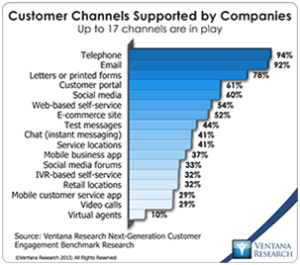During recent IBM analyst big data event, I learned about a new product, IBM Predictive Customer Intelligence. It extracts and processes customer-related data from multiple sources to analyze customer-related activities and has capabilities to predict customer behavior and actions. Predictive Customer Intelligence is built on IBM’s big data platform and supports extraction and integration of data from multiple sources, internal and external, and from structured and unstructured data.
During recent IBM analyst big data event, I learned about a new product, IBM Predictive Customer Intelligence. It extracts and processes customer-related data from multiple sources to analyze customer-related activities and has capabilities to predict customer behavior and actions. Predictive Customer Intelligence is built on IBM’s big data platform and supports extraction and integration of data from multiple sources, internal and external, and from structured and unstructured data. It can process data created by third-party products, such as text-based files of data created by converting speech to text. The product can capture and analyze customer interactions from multiple communication channels such as voice, email, text messages, chat and Web usage scripts and social media posts.
Predictive Customer Intelligence has four primary modules, for predictive modeling, reporting, real-time scoring and a real-time analytics data repository, which are connected by the IBM Integration Bus. These modules support a predefined process in which users build models from customer data stored in analytics real-time customer database and use them or predefined models to run real-time analysis against the customer data and produce scores, recommendations, reports and dashboards related to customer activities. The outputs can be delivered through a variety of channels such as outbound email, direct mail or text message. This can help contact center agents provide personalized and contextualized responses to customers’ questions. Other outputs can be used to produce targeted marketing campaigns or to respond to customer interactions through other communications channels.

IBM Predictive Customer Intelligence has capabilities that can help companies meet these challenges. However, a close look reveals that it is not one but 10 individual products (not including three connectors) packaged together. Organizations therefore need to understand the cost and operational impact of managing and use these products.
At the big data analytics event, Frank Theisen (IBM VP of front-office transformation for Europe) summed up the information challenges companies face; they need to know:
- What happened?
- Why did it happen?
- What can be learned?
- What action should be taken?
- What could happen in the future?
Ventana Research believes that big data analytics can answer these questions.
IBM focuses intensively on its technology sometimes to the extent of obscuring the business applications of those systems. One prime example is that more and more IBM big data products are moving to the direction of IBM Watson and methods of cognitive computing. Basically Watson is a platform that can search very large volumes of information to deliver insights from the data by use of natural language, and it is smart in that it learns as it searches, so that future answers are more refined and targeted to the questions asked. Such capabilities are particularly useful for analyzing the very large volumes of customer interaction data companies accumulate; they help identify trends, hot issues and focused information to help personalize responses and put them in the context of an overall customer relationship.
Our next-generation customer analytics benchmark research shows usability is the top priority for selecting analytics software: 64 percent of companies said it is very important. To provide it vendors should support point-and-click access to information on mobile devices and visual ways of showing the results of analytics. One case study IBM used during the day illustrated this; the user collects a vast array of data, integrates it and delivers analysis in visual formats on Apple iPads. This is well-suited for assisting customer-related activities that happen in real time (such as phone calls) where users need instant access to up-to-date information in forms they can understand immediately.
Companies already have huge amounts of customer-related data, and if you factor in the increasing volume of electronic communications, social media and the coming Internet of Things, this need will grow more acute. IBM has a variety of analytic products and is developing more. The challenge is to figure out which IBM products can best process what data and produce the required information and insights to drive decisions and action. Predictive Customer Intelligence and IBM’s other big data analytics are worth considering in organizations’ efforts to improve understanding of customers and their experiences.